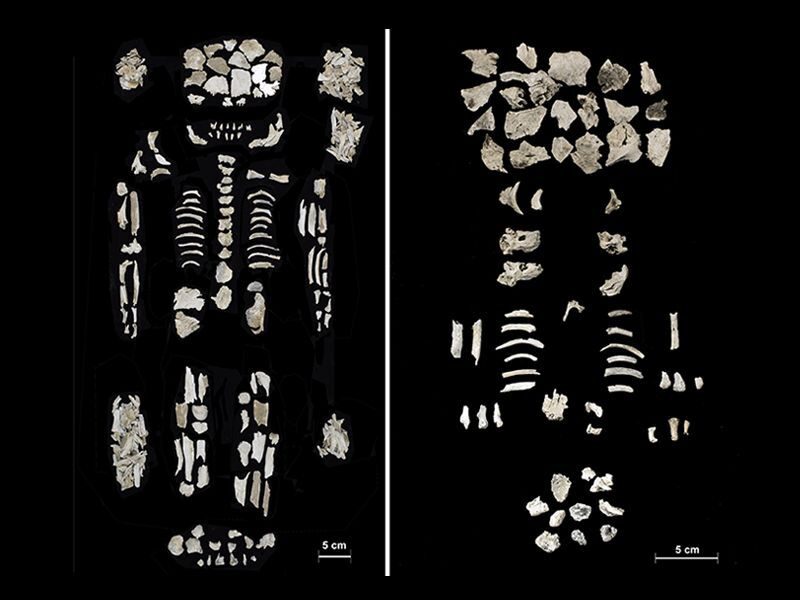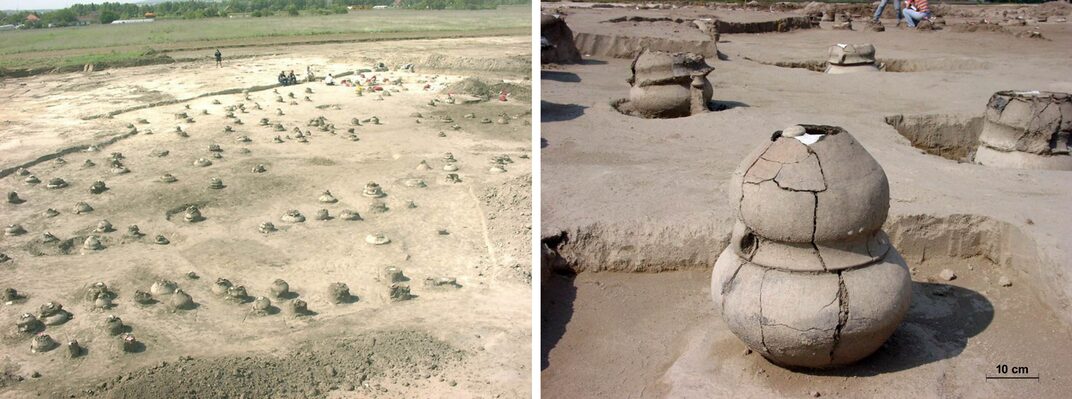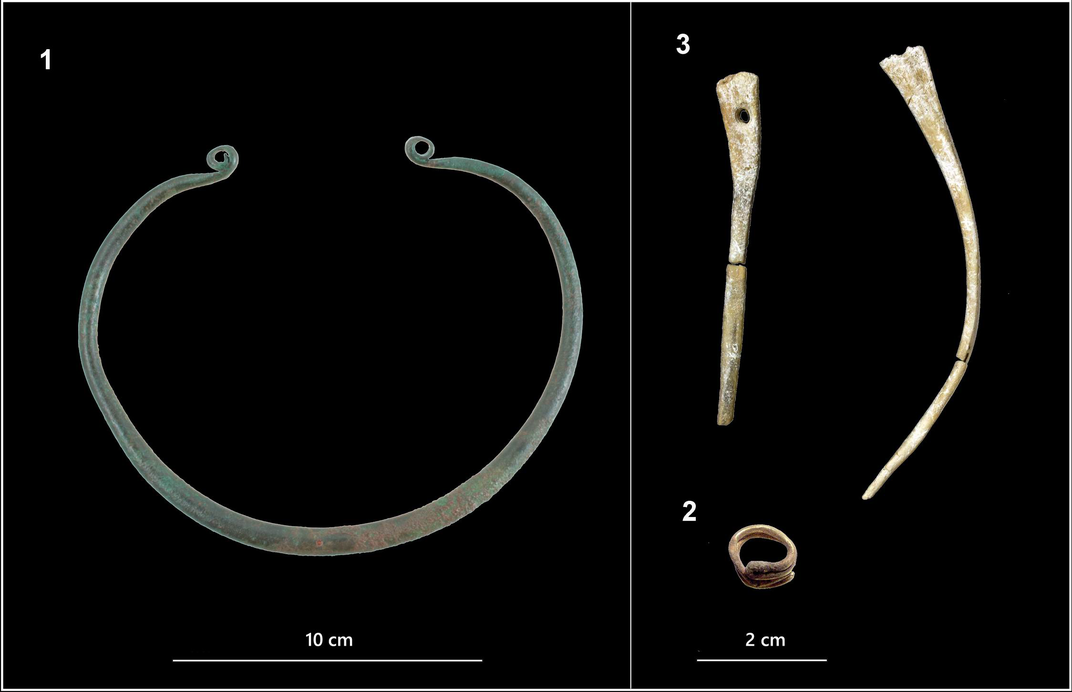
In use between roughly 2200 and 1450 B.C.E., the Szigetszentmiklós-Ürgehegy cemetery is linked to the enigmatic Vatya culture, which thrived on agriculture, farming and trade. (Bronze, gold and amber grave goods found at the site can be traced to trading partners across Europe.) So far, researchers have excavated 525 burials. But as Laura Geggel reports for Live Science, several thousand have yet to be investigated, making the graveyard one of the largest Bronze Age cemeteries known in Hungary.
For the study, a team led by Claudio Cavazzuti, an archaeologist at the University of Bologna in Italy, analyzed 41 samples taken from 3 burials and 26 cremations in the cemetery. The three buried individuals were adults of indeterminate sex, while the cremated remains consisted of 20 adults and 6 children 10 years of age or younger. Aside from number 241, each grave contained just one occupant — and the differences didn't end there.

Skeletal analysis confirmed that the woman was originally born outside the community, possibly in central Slovenia or Lake Balaton in western Hungary, per Live Science. The researchers came to this conclusion by scrutinizing the strontium signatures in her bones and teeth. Comparing strontium isotope ratios found in enamel, which forms in one's youth, with those present in a specific region can help scholars determine where an individual grew up.
The woman's isotope ratios indicate that she was born elsewhere but moved to the region between the ages of 8 and 13, likely to be married into a noble Vatya family. She eventually became pregnant with twins, only to die between the ages of 25 and 35. Researchers are unsure whether the mother died before or during childbirth, but the fetuses' gestational age was about 28 to 32 weeks.

The researchers' results reveal that the woman was part of an emerging elite class that married strategically. Their findings paint a vivid picture of how Bronze Age women traveled afar to wed and seal new alliances between different communities. In Bronze Age societies where men usually stayed in their hometowns, these high-ranking women were perhaps the drivers of new political, economic and military partnerships. Mixing of bloodlines, then, might have redistributed power from the top of the hierarchy to the rest of the population.
"Our study emphasizes the social and political role of Bronze Age women as agents of cultural hybridization and change," Cavazzuti tells CNN. "The more we know, the more we understand that the roots of our way of thinking have their origin in this fundamental period of European history."



Comment: See also: